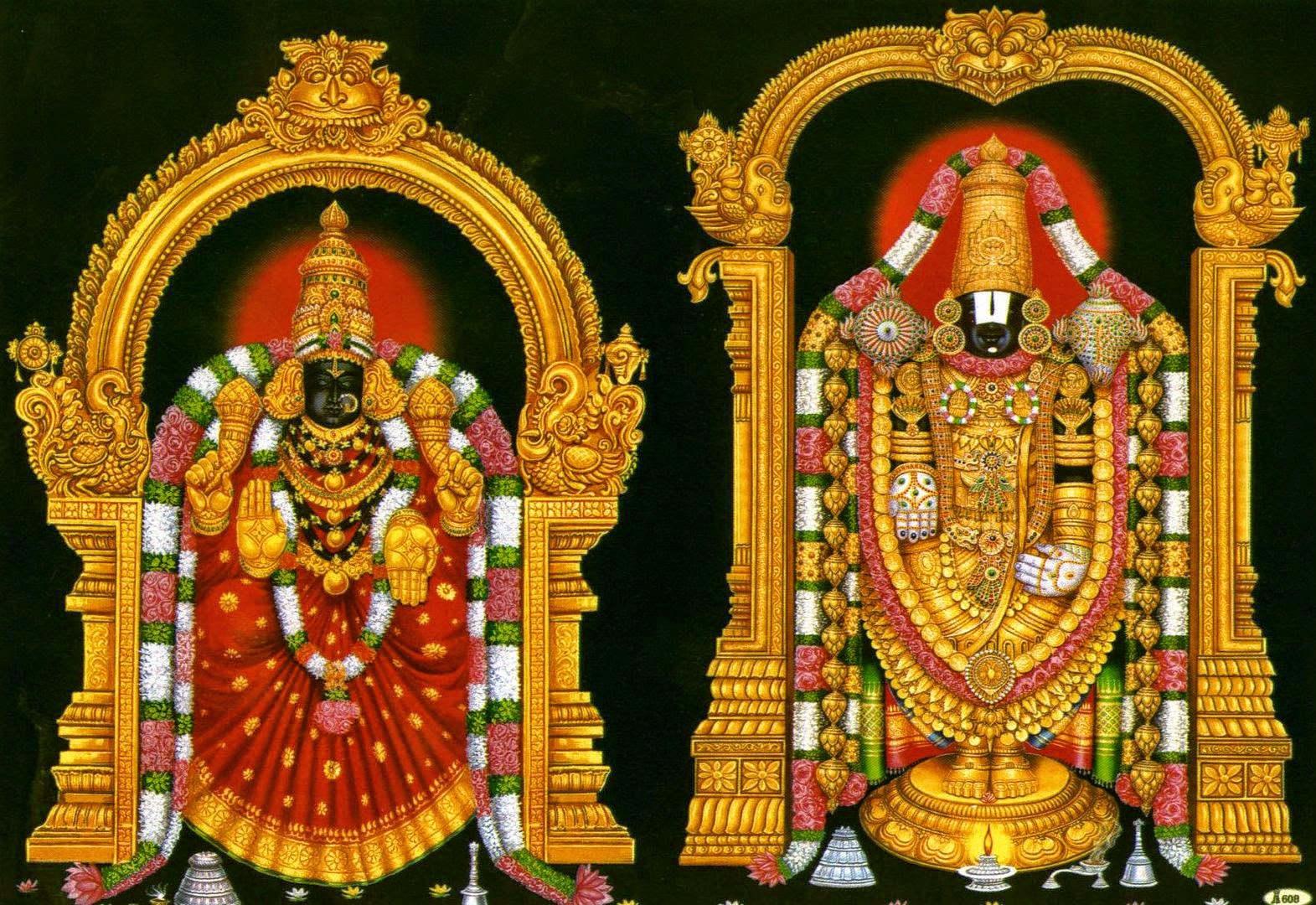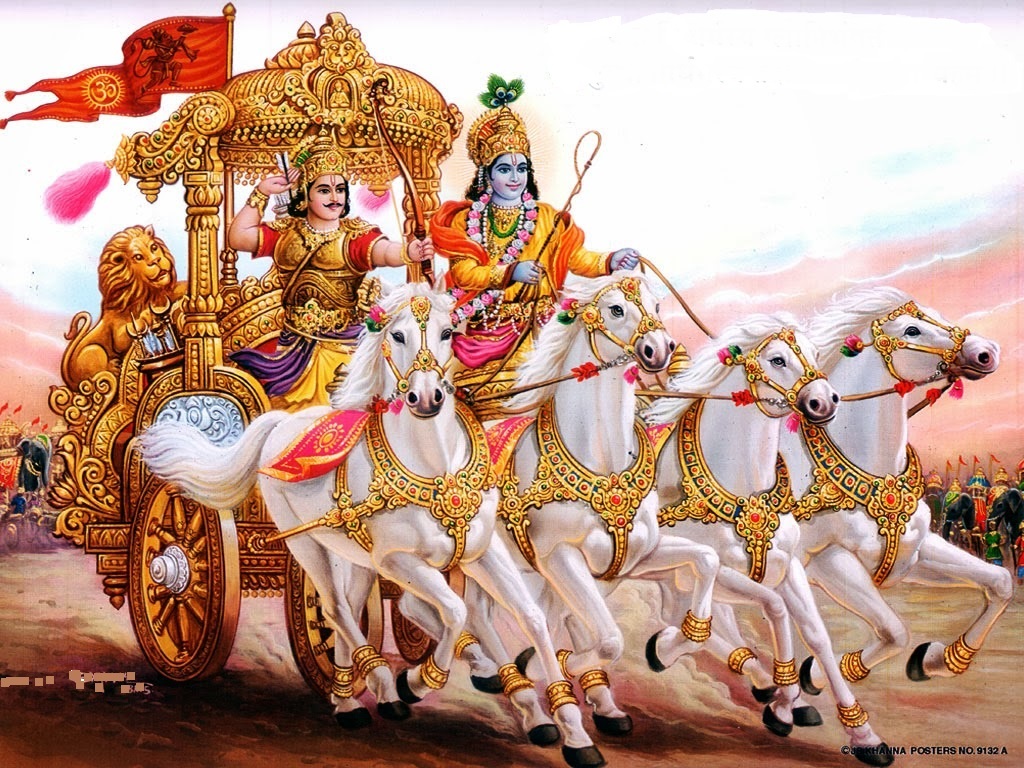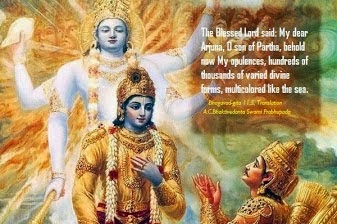The Relevance of the Bhagavadgita to Humanity 11-2: Swami Krishnananda.
===========================================================================================
Saturday 07, June 2025, 07:30.
The Relevance of the Bhagavadgita to Humanity 11-2:
Chapter 11: Participating with the Intention of the Universe-2.
Swami Krishnananda.
============================================================================================
The energies – sattva, rajas and tamas – can arrange themselves in any form; a particular form that they take is called a world, and we are a part of the world. Inasmuch as our mind, our consciousness, our intelligence is tethered to this particular form only, we cannot visualise any world other than this particular world. Our consciousness is tied to this body so forcefully that we cannot imagine that there can be anything other than this body. It is the only reality. In a similar way, the perceptive consciousness gets accustomed, by a vehemence of association, with this particular picture presented by a given pattern of the arrangement of these three forces, sattva, rajas, tamas, and makes us believe that there is only one world, that there is no other world, that this is the only reality. Many a time we are likely to imagine thus. We are caught up within a single prison, and therefore we do not know what is outside it. Infinite worlds are possible. Infinite possibilities there are of experiences, and endless are the potentialities in the bosom of prakriti.
Why should the gunas, or the properties of prakriti – sattva, rajas, tamas – arrange themselves in a particular form only, and not in any other form? This is something like asking, “Why I am born into this body only? I could have been born into some other body. What is the reason for my being what I am, and why am I not something else?” The answer is given. The propulsion of consciousness in a given direction is the reason for the shape it takes as the body, and the total action and reaction of the cumulative, concentrated direction given by a group of individuals, a set of individualities, is said to determine the kind of shape that the gunas should take in the form of a manifested universe. It does not mean that the same pattern will be maintained in every cycle, though there can be the same form maintained once again, if the necessity arises. A passage from the Veda says: The Creator creates the world in the same way as He did in various cycles or eons of creation.
There are, therefore, patterns of the projection of these forces – sattva, rajas, tamas. The variety that we see in the world is an illusion, as the illusion of the difference of presentation is made possible by the distribution of ink, though the inks may be only a few – one, two or three. Though variety is there, the basic substance of this variety need not be so multitudinous as the picture is made to look.
Now, the painted picture gives the semblance of a wholeness. Every part of the painting is sustained in a given manner in order that the wholeness of the picture can be made possible. Every particular dot of the ink should be in a particular position only. It should not be in some other position. And the presentation is entirely dependent on the total action of these many dots. There is a mutual collaboration, contribution, made, as it were, by these little dots. Every dot of ink cooperates with every other dot of ink, and it is this cooperative accumulation of presentation that gives us the idea of a wholeness which we call the picture. Actually, there is no such thing as the picture. It does not exist; yet, it appears to be there. What is there is only little dots of three kinds of ink, and these three dots variegated presented by the expertness of the artist give the impression of a manifoldness and a total vision of something.
In a similar manner, we seem to have an individuality of our own. I am a man, and a complete man, not a half man or a one-fourth man. Yet, this total man that I am, this individuality that I am assuming, is a picture presented by the three gunas. There is nothing in me except these three forces. I have many things. Everyone feels there are many things in this body, this mind, and so on. It is a big factory of varieties of treasure, as it were, but all these contents of this wondrous factory of human personality contain only three items, nothing more – the properties of prakriti: sattva, rajas and tamas.
*****
.jpg)










Comments